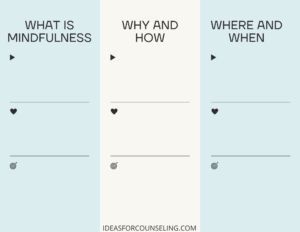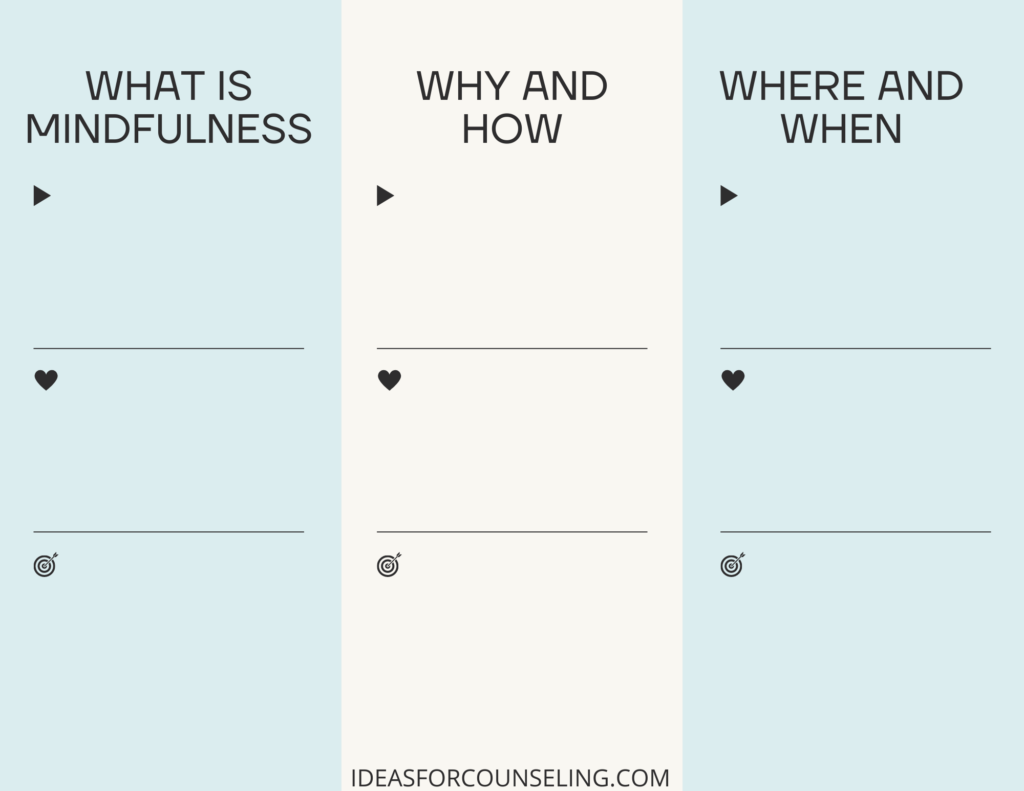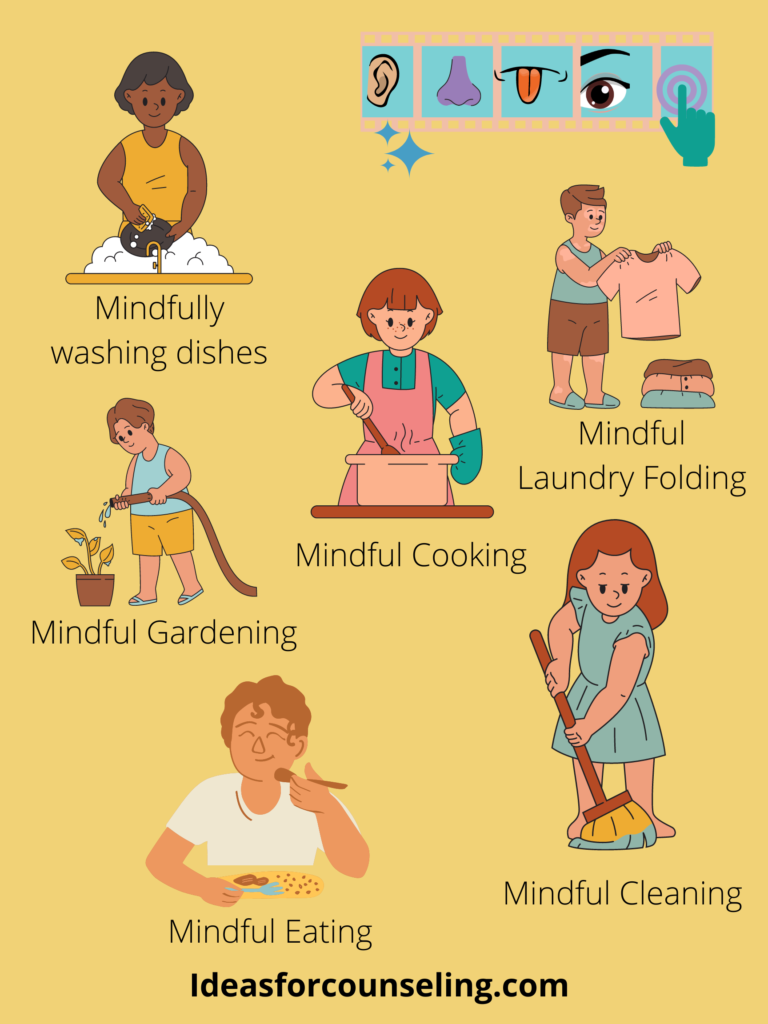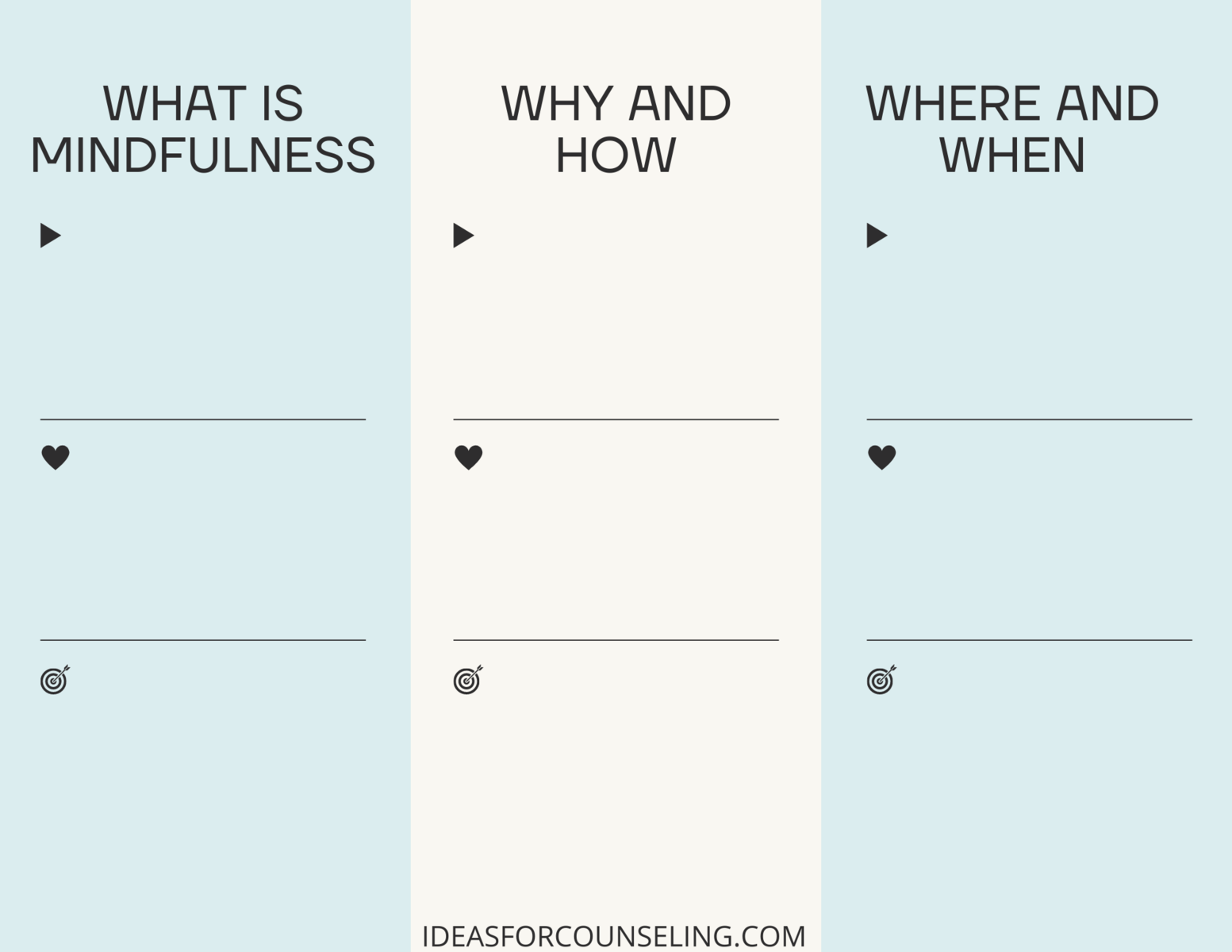
INTRODUCING MINDFULNESS:
So, I will be honest with you. In this one, you will have to experience and practice yourself, before you can teach others. I was able to fully learn about meditation and mindfulness after I joined 10 days of Vipassana meditation. It was a lot of meditation practice for 10 days, but I was able to fully grasp the meaning behind mindfulness.
- I start by asking what they know about mindfulness. Then I might give them a simple definition – living in the moment.
- Then I ask them to describe a time when they observed and experienced a moment as it is? (What did they see, what did they smell, what did they hear? what did they taste, what did they feel).
- So, I ask them whether there were any judgments or any attachments to that specific moment (did not want the moment to end because it was pleasurable, or wanted to be done with that moment because it was miserable, or it made them think of past or future).
- Lastly, I summarize it by saying “Mindfulness is a practice where you fully stay in the present moment without any judgment or attachment to it”. and how hard it is to practice mindfulness since these judgments and attachments were created for connection with other people and also for our protection.

PRACTICE EXERCISES DURING THE SESSION:
I will say that asking people to let go of their judgments & attachments to thoughts, emotions, sensations, events, situations is not as easy at all. I was thinking of those 10 days of meditation as ridiculously painful. I wanted to run away from that place every moment of that time. So, practicing during the session can really help them learn about it, experience it, and make their own judgments about it.
- LOVING-KINDNESS MEDITATION:
This practice exercise is a form of meditation where we send love and compassion towards others (someone we truly love, someone whom we consider as a stranger, and lastly someone whom we dislike, and towards oneself). This meditation can really help create some good topics.
- We create all these judgments, emotions, and attachments toward this person. However, they are not even aware of it. And you are the only one who is affected more – tensions or strong emotional reactions.
- We are the creator of our emotions. We can choose to either give it too much energy or avoid it or face it with mindfulness.
- We can avoid the thoughts, images, or sensations that arise with our emotions, but we can practice mindfulness to practice positivity, love, and compassion towards ourselves and others.
TEACHING THE BENEFITS
- As human beings, we tend to hang on by attaching to our state of mind such as “anger, sadness, anxiety, not feeling loved, and not feeling good enough”. We tend to be an expert on hanging on to or avoiding that state of mind, but we are not the best at letting go of it. Nothing is permanent- especially the state of mind. So, Mindfulness is a skill that can help us observe and continue observing until we let go of it.
- It’s a skill that helps us feel as if ( we are staying by the hill where we can watch the clouds slowly move and fade away) without being caught up in it or rain. And we all know what comes up when we get caught up in our state of mind.
- Mindfulness is a skill where you practice putting your focus and attention with the intention of things that come in front of you. It is also a skill of practice bringing your attention back after being distracted. So, it can really help improve your focus and attention.
DAILY PRACTICE OUTSIDE OF THE SESSION
MINDFUL EATING
- Relax before you eat and take a few deep breaths.
- Feel the sensations in your body to see if you are hungry (emptiness in the stomach, shakiness, no desire to eat, stomach growling, gulping, low energy, ).
- As you start eating food, look at the color, feel the way it tastes, taste its different flavors, feel its textures, and be aware of the smell, and south your mouth or the food is making.
- No multitasking while you are eating. Chew and swallow slowly.
- Check in multiple times and feel the sensations in your body to see if you are full or not.
- Focus on the temperature, flow, and the touch of the water on your hands.
- Notice the sensations and smell of the soap and bubbles.
- Feel the movement and motions of the dishes and your hands. Notice how it feels to stand on your feet or be aware of your shoulder and neck while doing the dishes. Notice your breath.
- Notice the dirty dishes without any judgment, and notice the clean dishes without any attachment. Just seeing them as it is.
- Notice the temperature of the water, of your body, and of the room as you continue to take shower.
- Take a moment to smell the soap, shampoo, and conditioner.
- Feel the sensation of touch when the water hits the body, feel the pressure of the water, or when you put shampoo in your hair, or the soap or scrub on your body.
- Listen to the noise that it makes when the water hits either your body or the floor.
- Look at the water sprinkles look, soap, and bubbles.


